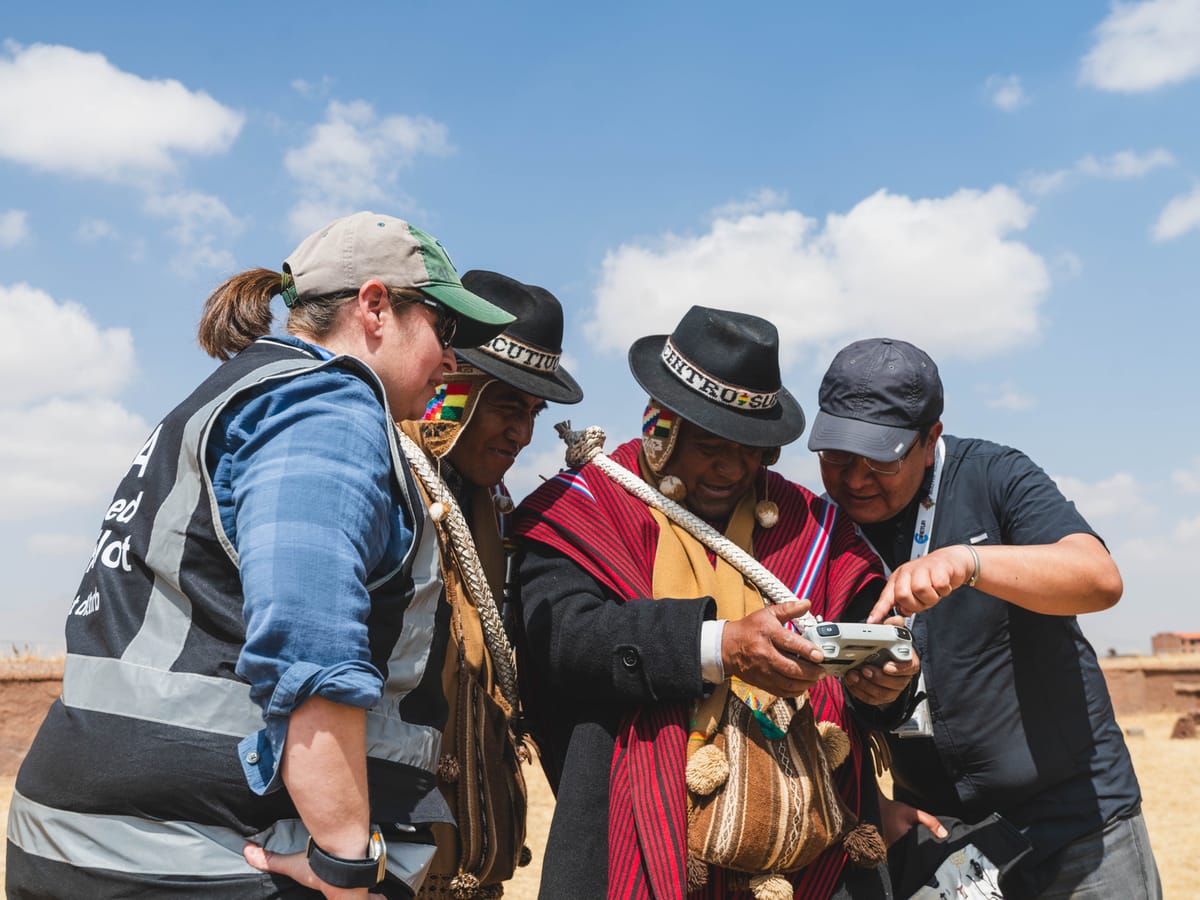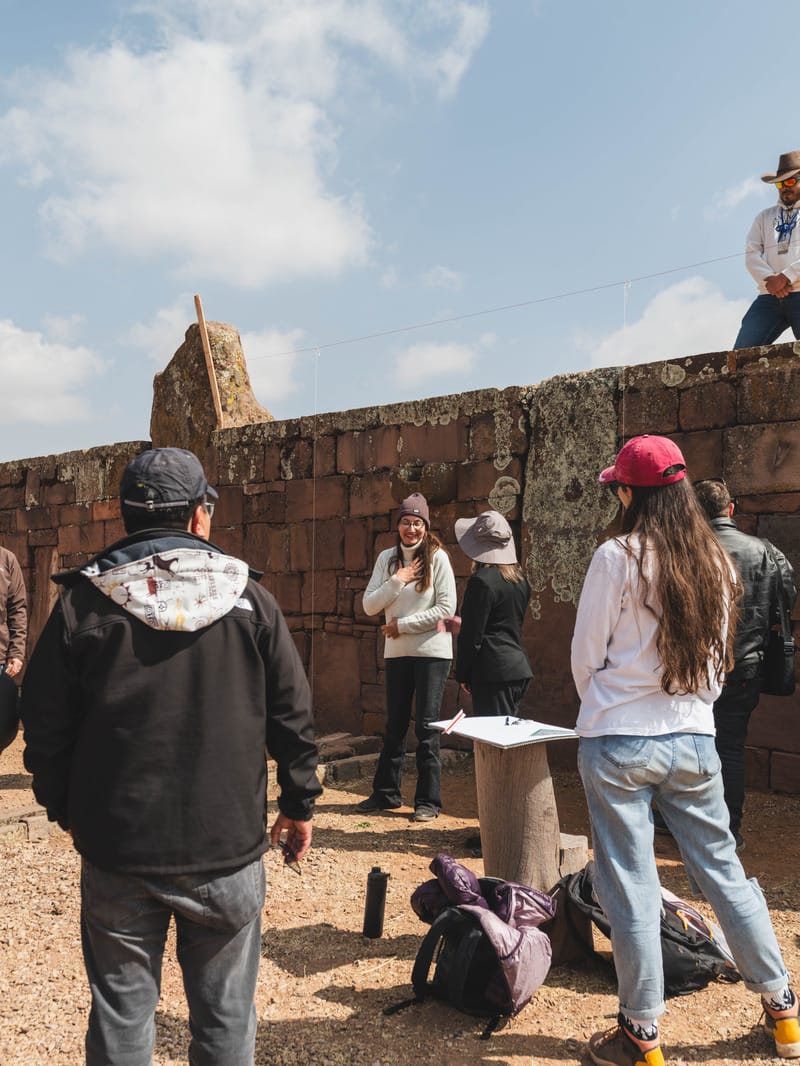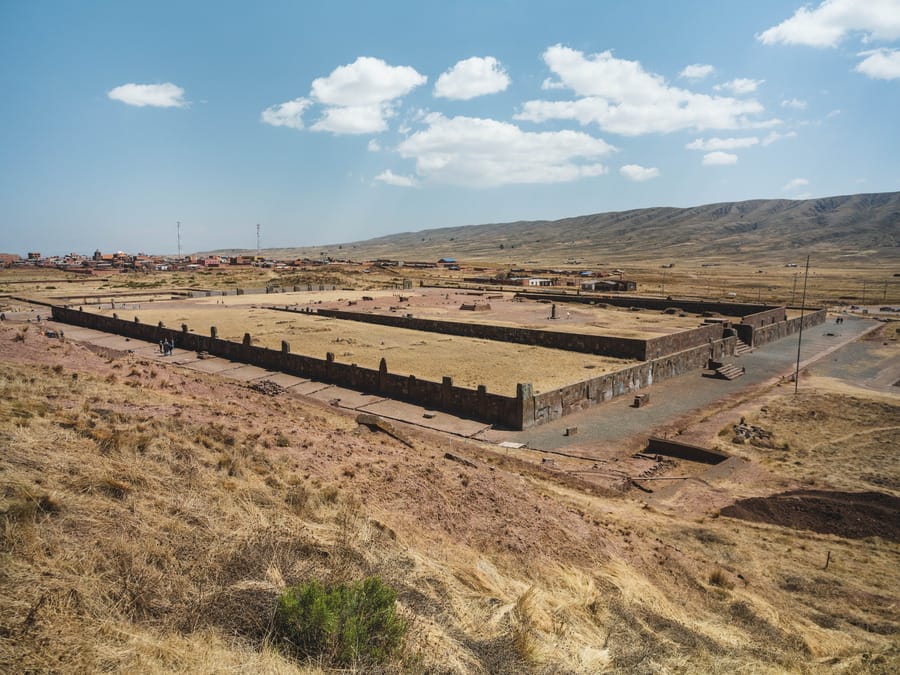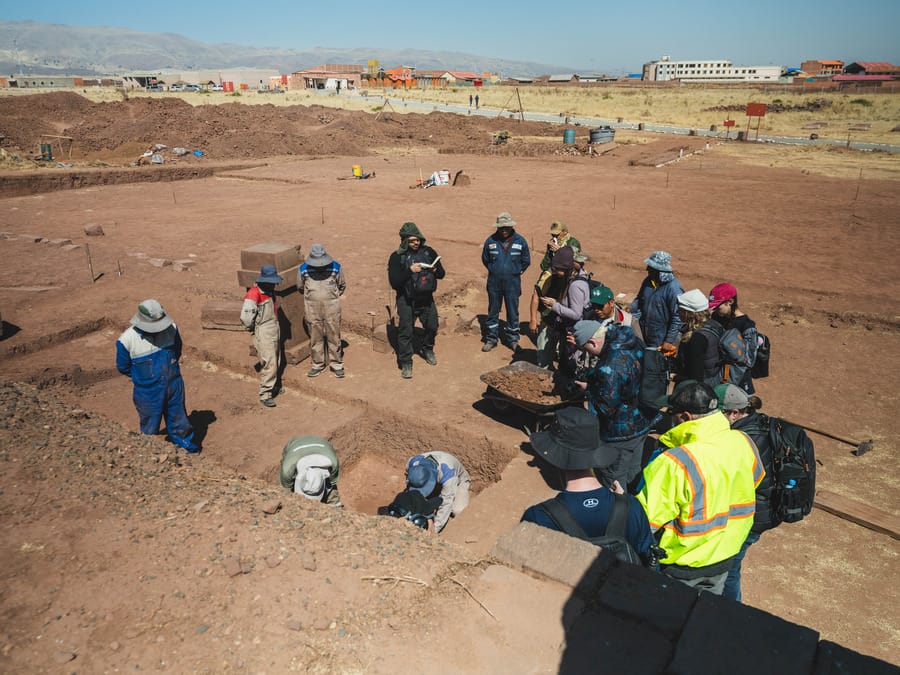

Orem, Utah, January 2, 2025
A team of three professors and six students from Utah Valley University’s (UVU) Smith College of Engineering recently traveled to Tiwanaku, Bolivia to assist the U.S. Embassy and the National Center For Preservation Technology and Training (NCPTT) to document and preserve Tiwanaku, a UNESCO World Heritage Site.
Tiwanaku is a significant pre-Columbian site covering 110 acres in western Bolivia that was once the cultural and political heart of the Andes. Revered as one of Bolivia’s most important landmarks, it sits on a sacred Andean plain at an altitude of 12,500 feet above sea level.

To begin their documentation process, a UVU professor and two students from the architecture program created detailed architectural drawings of key locations on the site, measured walls for restoration, and used mosaic photography to catalog and number each stone. Over the course of six days, the UVU team meticulously measured and documented the stones supporting the walls surrounding the Temple of Kalasasaya and the Putuni archaeological complexes.
“The drawings were relatively simple to create, but I could see it meant the world to them that the stones were being taken care of,” said Kierstyn Davis, a fourth-year architecture student who participated in the project. “It felt like I was a part of something much bigger than myself, and the skills I have as an architecture student made it possible to create an impact.”
Another faculty member led the stone cleaning efforts, providing guidance and instructions on removing lichen from the architectural stone. Team members recorded tutorial videos for the archaeologists and site maintenance staff. The UVU team will continue collaborating with the site’s director on stonework documentation, cleaning, and conservation methods to pass on to the Tiwanaku team.

Faculty and students from UVU’s Digital Media program created a 3D scan of the site for a future virtual tour, took high-resolution photos, and used a drone to produce a detailed map. This map, along with a measuring tool, will aid future researchers and restorationists. The web and production team also captured Tiwanaku’s culture and history through audio and video, which will be used to create a documentary.
Each team member was able to share and demonstrate the work that they had done while in Bolivia. One of the professors even coaxed a few of the local tribal elders to pilot one of the drones.

“Through extensive interactions with the community, we discovered there was a much deeper connection between the Tiwanaku site and the people than we had initially imagined,” said Tanner Mahovsky, a student and member of the production team. “Their history has been repeatedly stolen from them and it is our priority to help them document it and eventually share it with the world.”
“This project has given me an appreciation and desire to serve other cultures both in the present and the past,” said Katelyn Swain, a web design student. “My career goals involve taking my user experience and photography skills globally to connect people. This project was a perfect starting point for me.”

The Tiwanaku project is part of an ongoing collaboration between UVU, its digital media program, the American Embassy in Bolivia, and the U.S. National Park Service to support the cultural, historical, and archaeological preservation of Tiwanaku.
UVU emphasizes exceptional care for communities and provides students with opportunities to explore their goals and skills through projects like the Tiwanaku, Bolivia preservation project.
Learn more about the project here: https://www.uvu.edu/global/gap/gap-chss-bolivia.html

